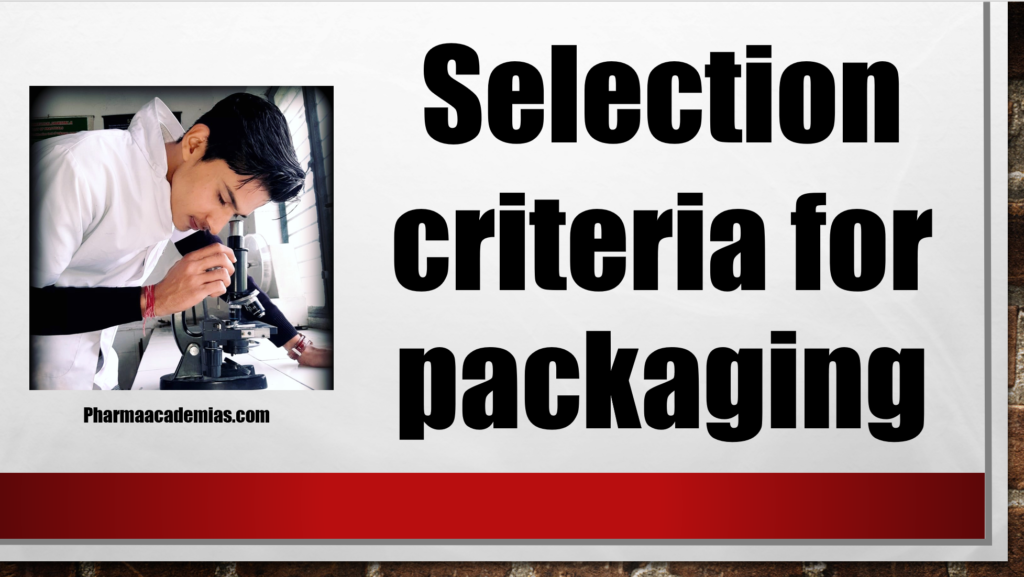Selecting the right packaging is a critical decision for businesses in various industries, as it can significantly impact product safety, quality, marketing, and environmental considerations. Below is a detailed note on the selection criteria for packaging:
1. Product Compatibility:
The primary consideration when selecting packaging is its compatibility with the product it will contain. Packaging materials must not react chemically with the product or alter its properties. For example, acidic products like aluminum should not be stored in containers that can corrode.
2. Physical Protection:
Packaging should protect the product from physical damage during handling, storage, and transportation. This includes protection against impact, vibration, compression, and temperature extremes. Different products may require different levels of protection.
3. Environmental Factors:
Environmental conditions like humidity, light, and temperature can affect the product’s stability and shelf life. Packaging materials must provide adequate barriers to these factors. For example, light-sensitive medications may require opaque or amber containers.
4. Barrier Properties:
Packaging should act as a barrier to prevent the ingress of oxygen, moisture, and contaminants while retaining the desired properties of the product. Permeability and barrier properties vary among different packaging materials, and the selection depends on the product’s sensitivity.
5. Tamper-Evidence:
Products that may be tampered with or compromised during transit or storage, such as pharmaceuticals or food items, should have tamper-evident packaging features to ensure consumer safety. These features provide visual cues if the packaging has been tampered with.
6. Ease of Use:
Packaging should be user-friendly for both consumers and the supply chain. It should be easy to open, reseal (if necessary), and dispense the product. Complicated packaging can lead to consumer frustration and may affect sales.
7. Regulatory Compliance:
Packaging must comply with various regulatory requirements and standards, especially in the food, pharmaceuticals, and cosmetics industries. These regulations may include labeling requirements, safety standards, and child-resistant packaging for specific products.
8. Cost:
The cost of packaging materials and design should be balanced with the budget and expected return on investment. While high-quality packaging can enhance a product’s image and perceived value, it should not significantly inflate the production cost.
9. Sustainability:
With increasing environmental awareness, there is a growing emphasis on sustainable packaging. Businesses should consider the environmental impact of their packaging materials, including recyclability, biodegradability, and reduced carbon footprint.
10. Marketing and Branding:
Packaging is an important marketing tool. It serves as the first point of contact between the product and the consumer. It should convey the brand’s identity, communicate product features, and stand out on store shelves. Aesthetic appeal, color schemes, and design play a crucial role in marketing.
11. Supply Chain Considerations:
Packaging should be designed with the supply chain in mind. It should facilitate efficient handling, storage, and transportation. Packaging size and shape can affect shipping and storage costs, so optimizing these factors is important.
12. Consumer Insights:
Understanding consumer preferences and behaviors is crucial in packaging design. Packaging should align with consumer expectations and convenience, making the product more likely to be purchased and used.
13. Customization:
Some products benefit from customized or personalized packaging. Customization can enhance the customer experience and loyalty by making the product feel unique and special.




